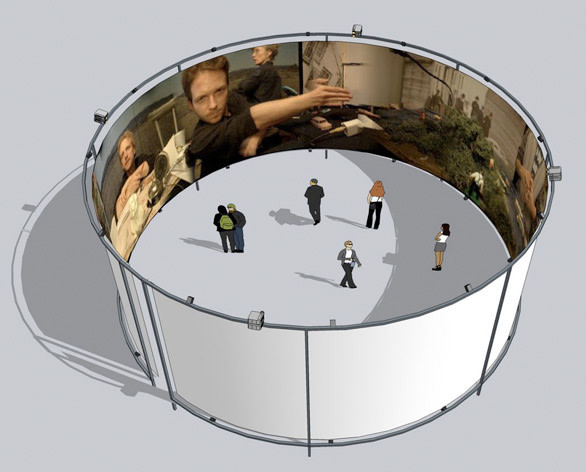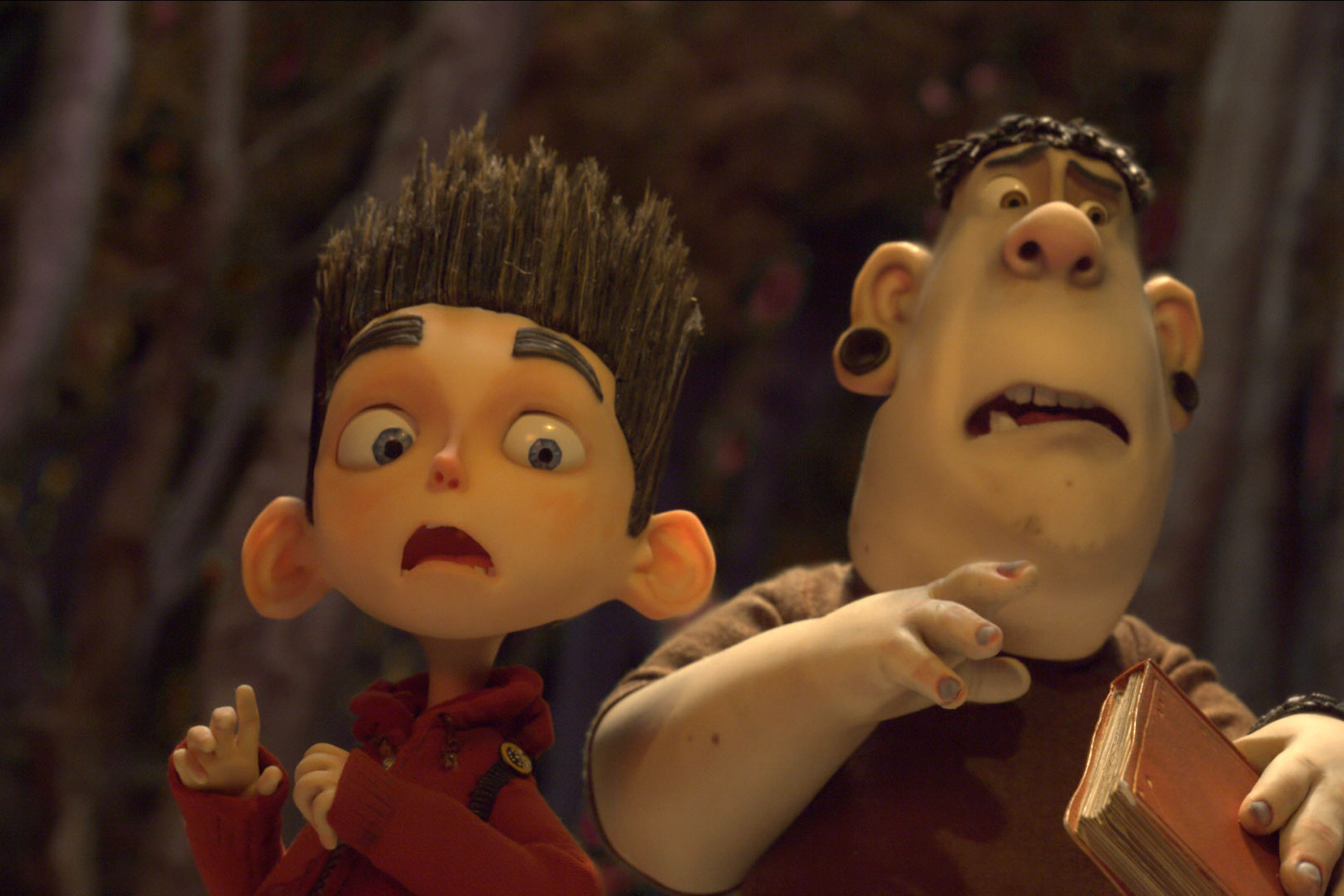TBA 2010: The Wooster Group

Image: PICA
Planning on seeing Wooster Group’s mindboggling media experiment? Well, There Is Still Time…Brother. And I recommend that you do.
A sensory smorgasbord of live characters, screens-within-screens, furniture, trash, and even dioramas (including toy dinosaurs, which seem to be surfacing everywhere as a postmodern icon), this Wooster Group masterpiece is inexpressibly novel and unflinchingly provocative—but it also sets the technical bar at a level that most “interactive explorations” can’t possibly step to.
In case you didn’t read guest blogger Claudia La Rocco’s rather glowing synopsis, the device is thus: Viewers are surrounded almost 360° by a giant curved screen (there’s a slight gap at the room’s entrance), and swiveling stools provide all-around viewing. The entire wraparound tableau hosts several “shows,” each with its own actors and audio, but all are knit together, and occasionally a character will break frame and move into another “show.” All the action is playing at once, but most of it is blurry and muted, most of the time. But one bright spot gives the audience full audio and picture—literally, a focus.
Now here’s the wilder part: the audience member who sits on the centermost stool, decides by swiveling, which scenes snap into focus, and which ones melt back into the shadows. There’s plenty to choose—anything from Paris Hilton porn, to a chip-bag being crinkled, to a monologue in progress. Audiences respond, then, not only to the action, but to the lead audience member’s choice of content. When they move, do you wish they had lingered? When they linger, do you wish they would move already, and switch the scene? This engagement is the piece’s true theme.
SPOILER ALERT: I now want to touch on content. If you don’t want to know ’til you see it, then swivel away.
The Wooster Group is so confident that no one can match their mastery, they have a character expose their tricks, both philosophical and technical, as part of the piece. On screen, a ginger-haired man very energetically explained how a cluster of twelve outward-facing cameras, filmed an inward-facing set that encircled them (see photo). He went on to touch on a profound truth: third parties always curate what parts of the world we see.
For example: the “show” that most consistently showed war, was an innocent plastic diorama of soldiers in a forest, and it was placed at the screen’s far edges, straddling the spot where the screen cracked—implying that some central aspect of the coverage could be missing entirely. In the diorama, villagers were replaced with soldiers; forestation, with devastation. The man stationed across from the tiny tragedy, was revealed to be shooting at it with a toy gun. “How many casualties?” he yelled to an offscreen presence.
I stayed long enough to see certain parts of the piece twice, and even thrice—but oddly enough, I never got to see the female character complete a thought. (And ironically, I didn’t try to take the center spot and make it happen.) Evidently an opinionated internet radio show host, she launched into the occasional prattle, between lots of “downtime” applying makeup, sighing, and staring into space. At one point, she fellated a partner. But whenever she would open her mouth to speak, the swiveler would tune her out, in favor of the war-hobbyist, the friendly casual guy, or one of the other background happenings. While I don’t want to apply the rigors of feminist philosophy here, it did feel disturbing to see the audience “turn off” the female character, presumably because she seemed like a nattering hag, and then “tune in” to her sexual exploits, as well as the Hilton porn, and even the friendly guy’s crude drawing of a naked woman. Combined Wooster and audience choices, painted women as a distraction—tongue-wagging in various dismissible ways, while foreign nations are bombed and burned. Another illustration of exculsionary curation at play.
It’s hard to leave Brother, and the minute you recoup, you want to go back until you’ve seen it all. When you consider that there are at least five fields of view, each containing 20 minutes of footage, it entails a minimum of 100 minutes of commitment. And that doesn’t account for the pesky center-stager flipping channels—which could easily quadruple that. At which point, you resign to the cruel truth: you’re never gonna see the whole picture. Just like life.
For more information on TBA events, visit PICA. A more comprehensive list of upcoming events can be found at our Arts & Entertainment Calendar.




